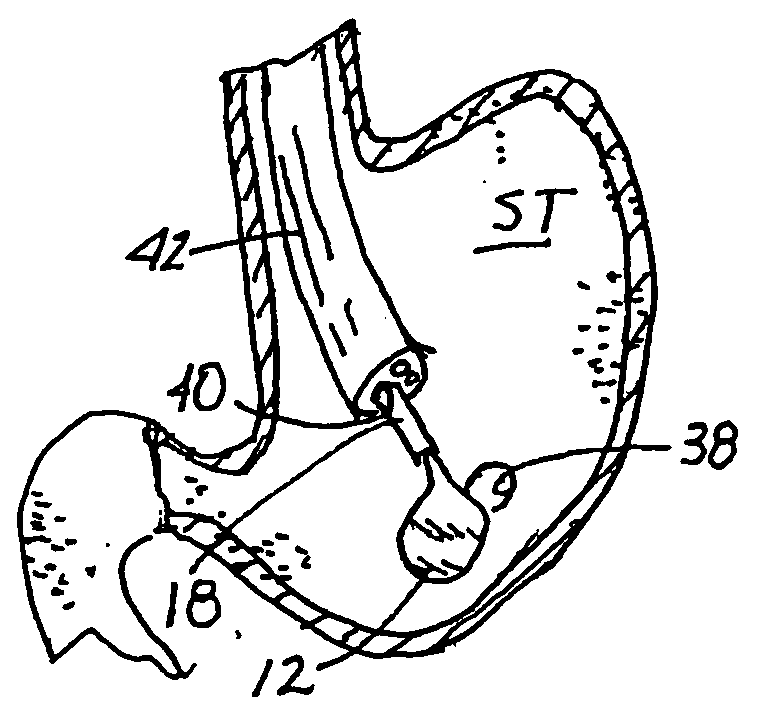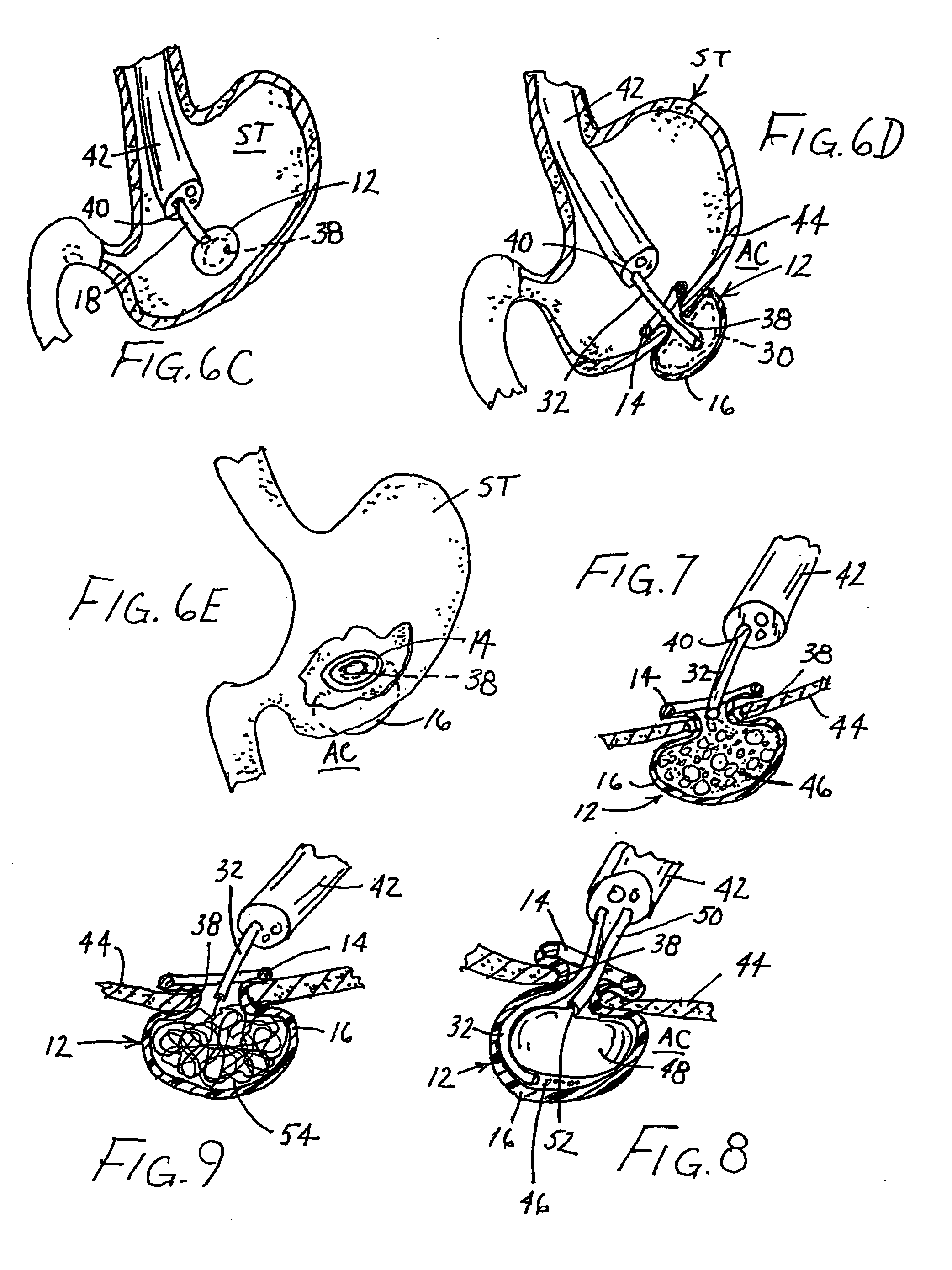Surgical kit, closure device, and associated method
a kit and closure technology, applied in the field of medical procedures, can solve the problems of difficult formation of fluid tight closure of perforation, and achieve the effect of quick hardening and facilitation of filling of deformed membranes
- Summary
- Abstract
- Description
- Claims
- Application Information
AI Technical Summary
Benefits of technology
Problems solved by technology
Method used
Image
Examples
Embodiment Construction
[0037] As shown in FIGS. 1 and 2, a surgical closure device 12 comprises a ring 14 made of flexible material and an elastic membrane 16 attached about its periphery to the ring along the entire circumferential extent thereof, thereby covering an aperture 17 defined by the ring. Membrane 16 is at least coextensive with aperture 17, thereby closing or blocking the aperture. Both ring 14 and membrane 16 are made of a biocompatible polymeric material that is acid stable or impervious, thereby enabling implantation of the closure into the stomach for covering a gastric perforation formed, for instance, during a trans-organ or incisionless surgery as described in U.S. Pat. Nos. 5,297,536 and 5,458,131.
[0038] Ring 14 and membrane 16 may be inserted into a hollow internal organ of a patient, such as the stomach, the vagina, the urinary bladder or the colon, by means of a tubular deployment member 18 as illustrated in FIG. 3. Deployment member 18 is made of a partially flexible material whe...
PUM
 Login to View More
Login to View More Abstract
Description
Claims
Application Information
 Login to View More
Login to View More - R&D
- Intellectual Property
- Life Sciences
- Materials
- Tech Scout
- Unparalleled Data Quality
- Higher Quality Content
- 60% Fewer Hallucinations
Browse by: Latest US Patents, China's latest patents, Technical Efficacy Thesaurus, Application Domain, Technology Topic, Popular Technical Reports.
© 2025 PatSnap. All rights reserved.Legal|Privacy policy|Modern Slavery Act Transparency Statement|Sitemap|About US| Contact US: help@patsnap.com



